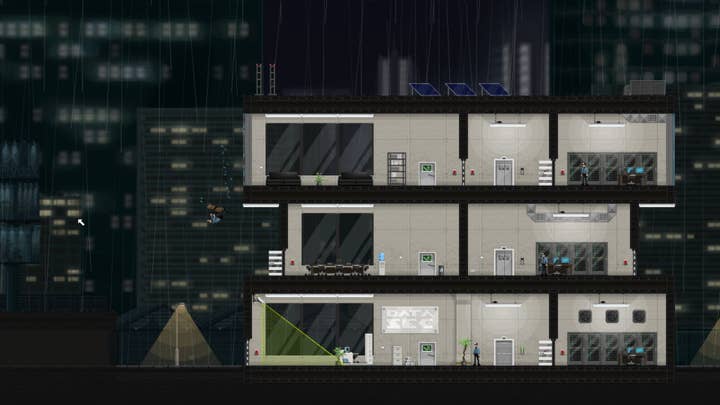How to market your video game and find your target audience
Versus Evil, Raw Fury, Headup Games, Good Shepherd and Dan Adelman offer advice to developers on how to market their game
How to market your video game and target your audience requires a lot of work and thought -- whether you are a publisher signing a game, a developer approaching a publisher, or a small studio going it alone.
Thankfully, plenty of others have gone through this process and have much to share.
The following combines advice by former Nintendo of America's head of digital content and development Dan Adelman, now at Leadman Games, as well as Versus Evil general manager Steve Escalante, Raw Fury founder Jonas Antonsson, Headup Games CEO Dieter Schoeller, and Vernon Vrolijk, head campaign manager at Good Shepherd (formerly known as Gambitious), who were speaking at the inaugural Devcom conference in 2017.
- Don't be afraid to market your game and find your target audience
- Identify your game's 'hook' as part of your marketing
- Choose your channels carefully
- Identify your target audience - and only target them
- Premium pricing should always be an option
- Don't just repeat previous tactics -- try something new
- Tell your story as part of your marketing... but not all at once
- Don't disregard traditional press -- and don't give up
- Aim for the biggest readerships
- Understand influencers' audiences before you reach out
Don't be afraid to market your game and find your target audience
"Most people view marketing as a dirty word, and I'm no lifelong marketer either," Dan Adelman says, as quoted by Matt Handrahan. "If you look at marketing as selling your product to people who otherwise don't need it or don't want it, that, I think, seems a little distasteful to the indie community, and rightly so.
"But there are people out there who, if they just knew about your game, would actually really like it. You're doing them a service by letting them know about it. It just takes time to get the word out to the right people."
And based on Adelman's experiences since he started looking for projects post-Nintendo, time is an undervalued commodity among indie developers.
"Some had already shipped and aren't doing well. I can't help that person any more," he says. To make a material difference to the commercial success of any given product he would ideally want a minimum of six to nine months ahead of the launch.

That's a solid rule of thumb that any indie contemplating how to find and build an audience should adhere to, and the sort of sustained, public-facing approach that developers like Mike Bithell (Thomas Was Alone) and Tom Francis (Gunpoint) have employed to their advantage.
"It's not easy, though," Adelman says, grinning. "Just ask Phil Fish. There's ways to do it wrong."
Vernon Vrolijk from Good Shepherd, as quoted by James Batchelor, continues: "The market is the most crowded it's ever been, so the opportunities are there but the reality is that things are tougher than they've ever been. You have to have a clear vision of what you want to do with a game, you can't make that up as you go along. That's a recipe for failure, for both the developer and the publisher."
Identify your game's 'hook' as part of your marketing
"My marketing director always asks me, 'Well, what's the hook?'," says Steve Escalante from Versus Evil. "You have to think about how your game is unique. Because the press is going to pick up on that, the community is going to pick up on that. They're going to compare you directly to [other] games and say: 'yeah, it's just this'. If it's not: 'This plus...' or if it doesn't have new things added to it, from a marketing point of view it makes it really hard [for us]. It can't just be a reskin. That's certainly something to consider at the beginning of your project."
Vrolijk adds: "We're gamers. If we get excited playing your game, I know I can get people excited. If I play the game and can't think of anything to say about it, that's a bad sign. It's hard to build from that.
"Is the core gamer in me excited [about your game]? Do I want to invest two years of my life to work on this? If I do, there's magic -- but we have to feel that magic together. You can't fake it. If you fake it everyone will notice, in everything you do. Influencers, the players, the press. The magic needs to be organic, you can't force it. You can, but you're not going to help anyone, especially the dev because you're not going to bring them the success they deserve."
"We're gamers. If we get excited playing your game, I know I can get people excited"
Vernon Vrolijk, Good Shepherd
Dan Adelman continues: "The cost of development is definitely lower than ever before, but the number of really talented designers isn't going to increase significantly in such a short window of time. My daughter went to a summer camp where they taught the basics of Unity for week and by the end of the week she had an endless runner game that was probably comparable to a lot of stuff on the App Store.
"She couldn't compete with someone who's really talented at design. It's a craft, and not everyone who thinks they can be a great game designer will become one. A lot of indie developers who became 'overnight successes' were working at it for ten years."
Adelman offers Super Meat Boy as an example: a conventional game in certain respects, but one from a team with the experience to refine and polish to an exacting standard. More importantly, Team Meat took that classic template and made it something distinctive and personal.
"It sounds cheesy, but when you're competing with the rest of the world you need to find what it is that you have that nobody else does. That's your life experiences. Put all of that in the game. And it's hard to say, but not everyone is that interesting. Some people have a really interesting perspective on the world, and other people are like a lot of other people. Their unique take on the world might look a little generic."
Choose your channels carefully
Vrolijk explains that you also have to think about ways to market your game that make sense for what it is, that show off its uniqueness.
"Each game is unique is in their own way and require their own approach," he says. "Some games look awesome in a GIF, so with that game you can do some Twitter marketing because within two seconds, the game gets everyone's attention. Other games don't. If you have a simulation game, it's hard to make putting something in a barrel look cool with a GIF -- it just doesn't work that way. You need to find out where the audience for your game is, where you should invest the money and that's hard."
Identify your target audience -- and only target them

Vrolijk points out there are tools out there that will you help you identify your target audience and reach it.
"You have more tools at your disposal than you've ever had before," he says. "You can target to such a minuscule extent who you need to get to. Things like Google AdWords are super powerful. Once you understand your audience, you can work hard on getting them and target them where they live. Doing a shotgun approach, blasting everyone everywhere [with ads] is not effective. Even if you reach 100,000 people, if only 2,000 people actually like that game it's not a good use of your capital. Better to hit 10,000 people where all 10,000 are excited by it."
Dan Adelman adds: "I don't want to tell anybody to develop their game for this or that type of consumer. That's EA's model, and EA's going to beat you at that game. But a piece of advice I give to a lot of developers is to put your personality into it and make it your game, but then find out who's going to like that game, find out where that niche market is -- because each individual game can be a niche market.
"Then make sure that you go back and really polish that game and iterate on that game so it really owns that niche. I've seen too many game where the person doing the art is all about cute and fluffy, and the person doing the mechanic is all about hardcore gameplay. There's a mismatch."
Shovel Knight is an instructive example here. Yacht Club Games had a great idea that would probably have found an audience on any platform, but it was savvy enough to recognise that its game really belonged on the 3DS and the Wii U -- at the time they made that decision, probably the least appealing platforms to most indie developers.
"They focused on what a lot of people perceived to be the weakest platform, and did very, very well," Adelman says. "They released some numbers, and sales were comparable to or better than Steam on both Wii U and 3DS individually."

Premium pricing should always be an option
Even in the more "ethical" manifestations of the freemium model, which don't use "psychological tricks to goad the player into opening their wallet," Adelman would still be reluctant to be involved in their development. Ultimately, his stance comes to down to a very simple, very important belief: "Good games are worth paying for."
Adelman categorises the race-to-the-bottom mentality on digital platforms as a big problem for game developers, who seem less and less inclined to fight against the prevailing winds. From Adelman's perspective the sort of experiences a gamer can buy for $15 to $20 are "a steal" compared to what's available in other entertainment media -- and even compared to the products being created on the AAA level of the games industry.
But fortunately, there's still a lot of potential for ambitious indies to make the case for premium pricing and day-one purchases -- particularly on consoles, perhaps the last consumer environment where a substantial price tag doesn't seem anachronistic.
"I'm a big fan of the Humble Indie Bundle and what they're trying to do, but I think that a lot of people are now trained to wait for games to come out in that way," Adelman continues. "I'd like to see more developers put a stake in the ground and say: 'I'm not going to discount my game for a year'.
"A lot of people who follow me on Twitter are just fans of the whole indie gaming scene. And I feel like I have to remind everyone that a lot of these developers live on ramen noodles and sleep on their friends' couches. If you're a fan, once a month buy something at full price. Pay $15, pay $20, as a donation if nothing else."
Don't just repeat previous tactics -- try something new
If you've been lucky enough to have one successful game already, do not rest on your laurels -- the strategy that worked for your debut title may not apply to its follow-up.
"You need to customise what you're doing for every single game," Jonas Antonsson, from Raw Fury, says. "You need to think about the game first and then build around that, not template it and repeat the same stuff again and again. It's all about being smart with the money you have to spend."
Tell your story as part of your marketing... but not all at once

"Sometimes it can be super great to leverage the developer's audience out there," Antonsson continues. "Because some of the developers like to tell their stories, they have their following, they have their core audience. They have fans, people that love what they're doing. Building on that and helping them take that to the next level can be extremely beneficial so we also try to lean into that whenever we can."
Escalante continues, explaining why you however shouldn't tell all of the story at once: "Think about what stories you have and how many times you can release content. Meaningful content, not just a new screenshot but something surrounding a feature that you guys love. How many times can you do that? Because you need to plan that out -- especially if you're going on Kickstarter or doing any sort of crowdfunding.
"You can end up firing all of your bullets out of your gun because you're trying to get funding, and when it comes around to press time, the press want to know something new. Don't tell all your stories, take a step back and work out who you are as a developer, what your special tech is, what things you can do to get press and influencers excited about you as a studio. You have studio stories and game stories as well."
Don't disregard traditional press -- and don't give up
Marketing almost inevitably goes through influencers these days -- but that doesn't mean you should disregard other channels.
"Some games don't work with influencers at all," Headup Games' Dieter Schoeller says. "Sandbox games work really well because the influencer can show their personality while playing the game. But if you take a point-and-click adventure game, if people saw the story they won't buy the game. You have to be really careful."
"Think about what stories you have and how many times you can release meaningful content. You need to plan that out"
Steve Escalante, Versus Evil
Vrolijk adds: "One of the main things you need to understand is everybody is busy. If you want someone to help you, you need to think about how you can help them. It has to be a two-way street. What works best is whatever works best for the site's audience. If you have a game that has a hook a journalist can write about, something they can get excited about because they can use it to build a story they can tell their audience, then go to traditional press. If you have a game that is silly, that is stupid fun for five minutes, don't go to traditional press because they're not going to care. Instead, go to the influencers whose community expect that.
"You help them by giving them content that can help get them clicks. That's what it's about, it's about clicks. Get them clicks and they will help you. It's always good to keep pushing, but remember that they have billions of emails coming in. To break through the noise, you need to understand it's a two-way street. You can't just take, because then you're not going to get very far."
Aim for the biggest readerships
Whoever you end up targeting, whether that's influencers or traditional press, aim for the big fish.
"We try to work with both influencers and traditional press," Schoeller says. "It's hard to get attention from Kotaku, Polygon, Rock Paper Shotgun because it's such an overcrowded market, but we've done a ton of press work with smaller sites which had zero impact on sales. You can spend hours and hours on it, you'll get great articles but they will not do anything because you're just on a smaller site that two people read.
"It's better spend time working with the 20 big pages, taking a tour, visiting them, getting the content ready rather than spending all my time on smaller websites, fan sites. Don't stop trying with the bigger magazines, keep emailing them until they listen. They won't listen every time, but take the chances. It doesn't help anybody if you're holding back."
Understand influencers' audiences before you reach out
However, before you reach out to the biggest websites and YouTube channels out there, Vrolijk advises to take the time to research them. Once again, it's all about targeting what's relevant to your content.
"Work out which influencers are going to like your game because they have their own audiences, they need to think about their own clicks," he says. "If you target an influencer that hates fighting games, but you have a fighting game, he's not going to play it. You can beg, you can cry, you can be the nicest guy in the world, but at the end of the day he has his own community. Use things like Keymailer to find who does fighting games and reach out to him. Spend more time trying to reach out to guys that can actually help you, instead of trying to reach everyone."
Our guides to making money from video games cover a wide range of topics, from crowdfunding to choosing a release date, to how to best collaborate with publishers to exhibiting at shows. Have a browse:
- When to release a game: Ten things to consider when choosing a video game release date
- Game convention exhibiting guide: The real cost of exhibiting at a game expo
- How to get your game released on Google Stadia
- More articles about selling games...









